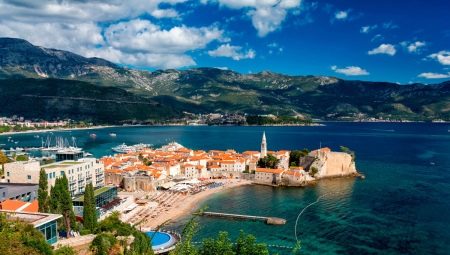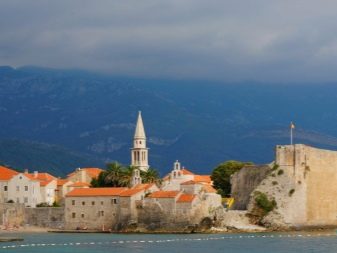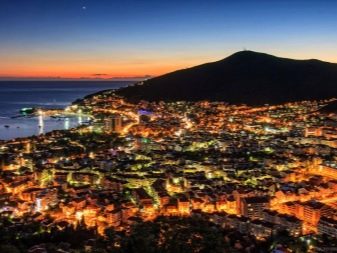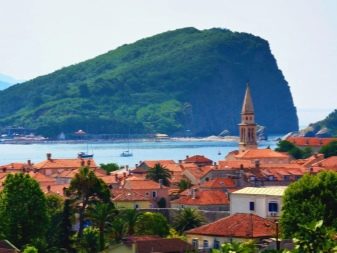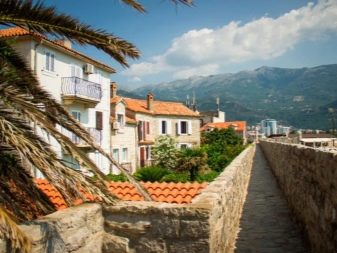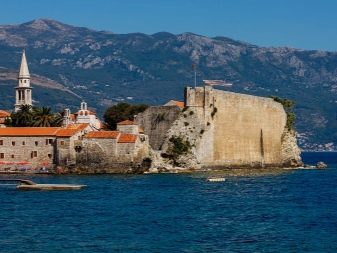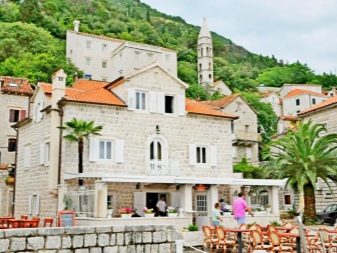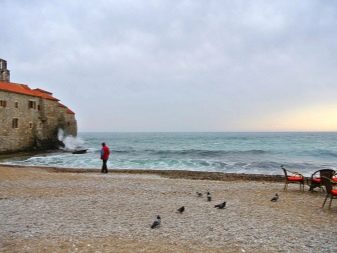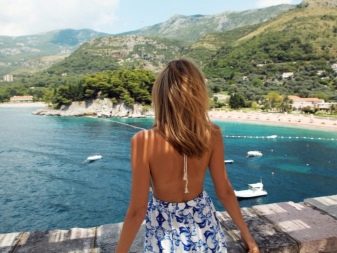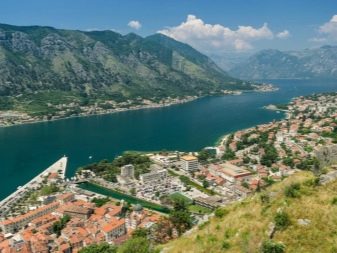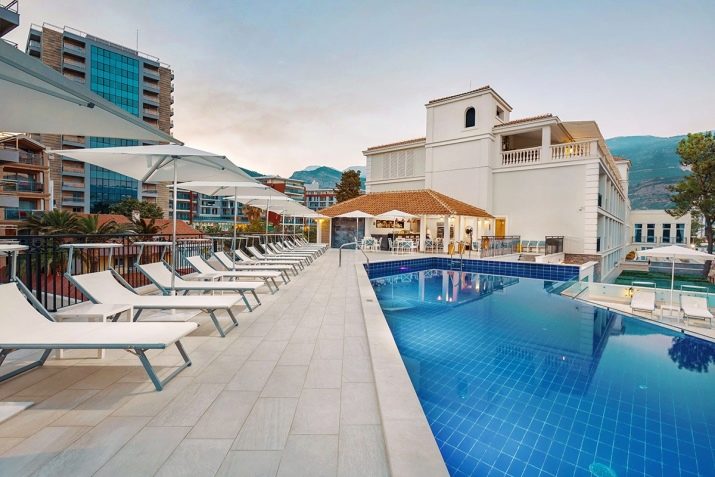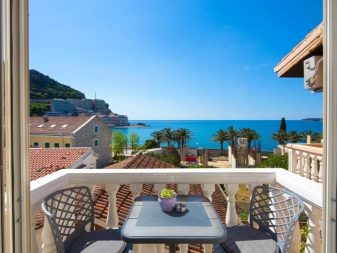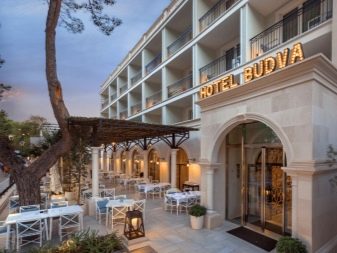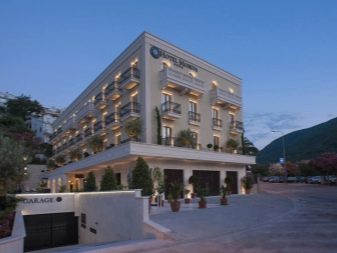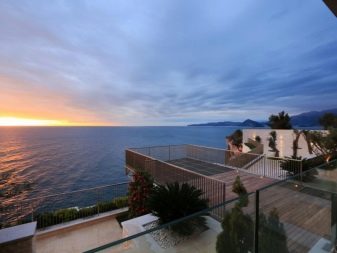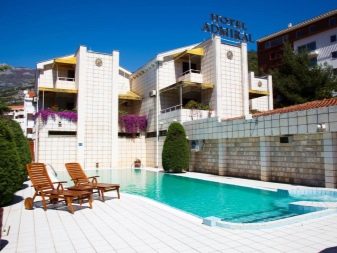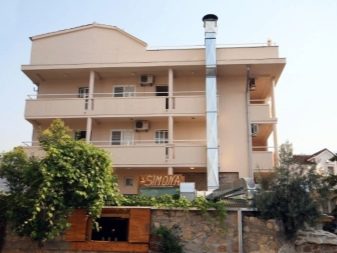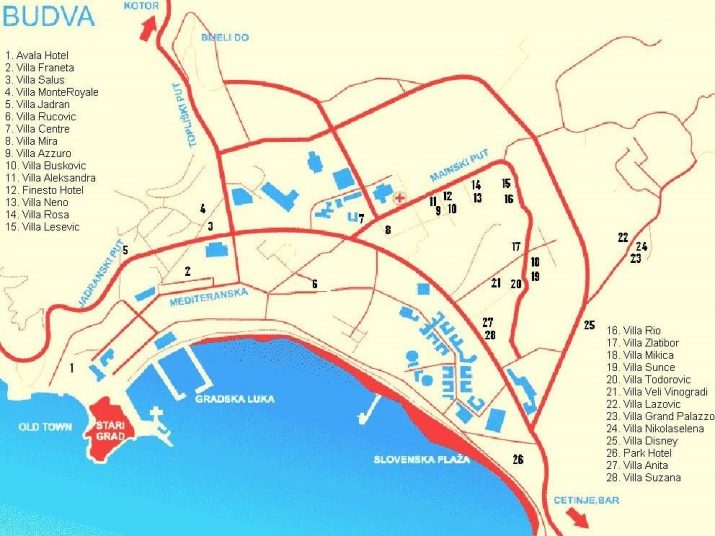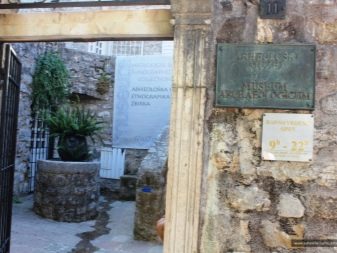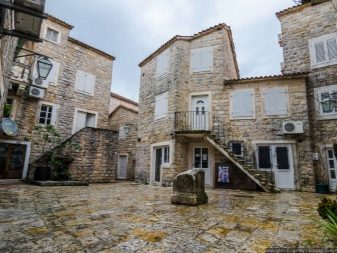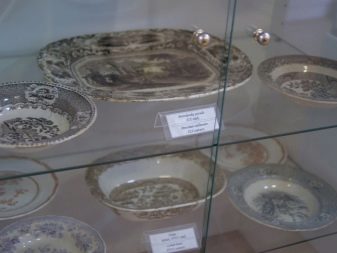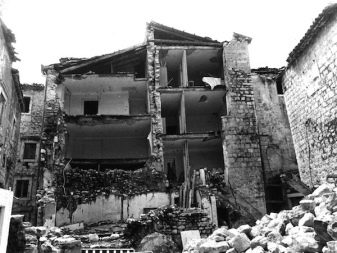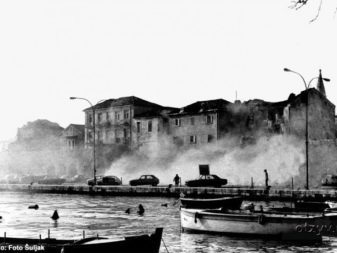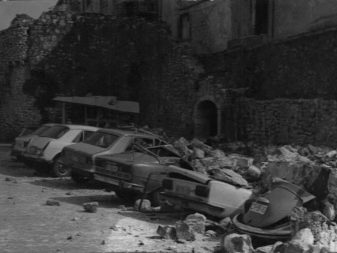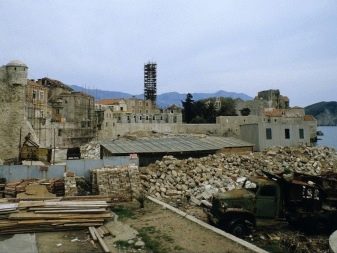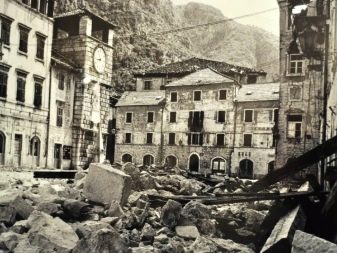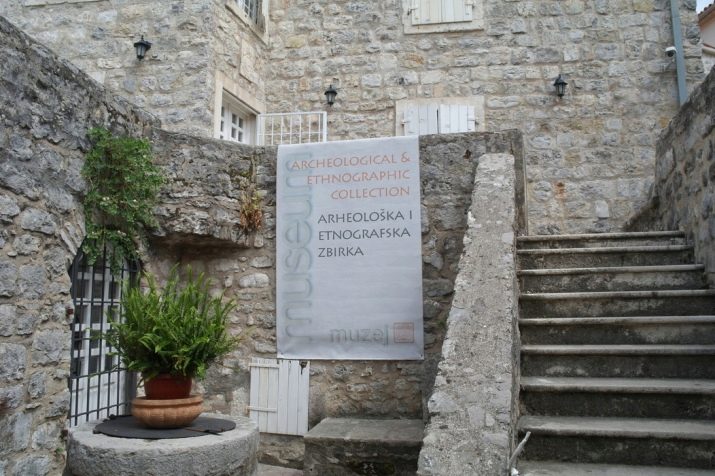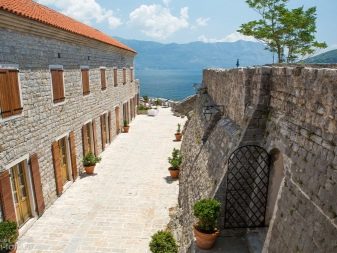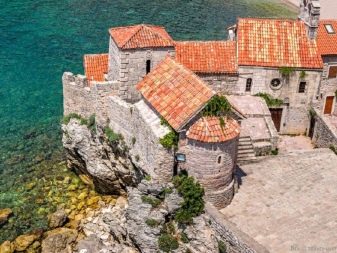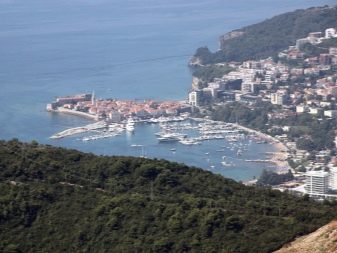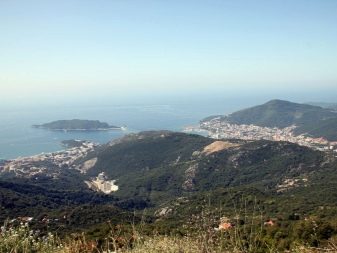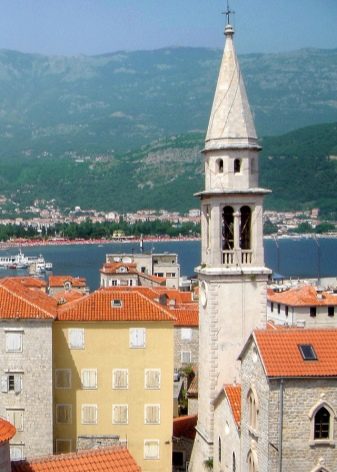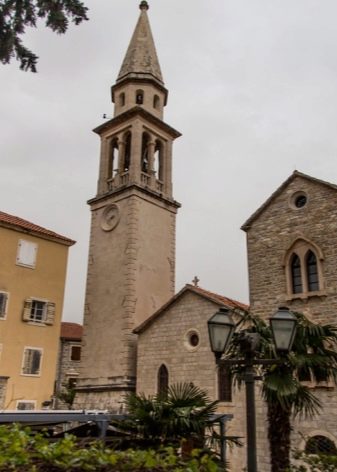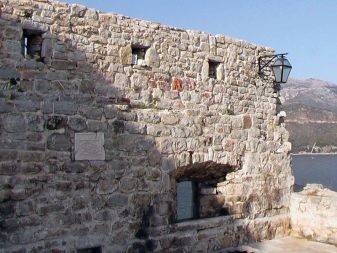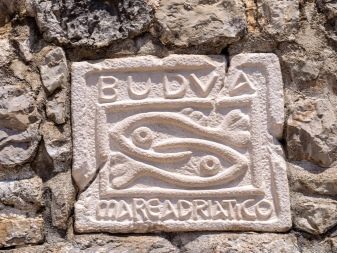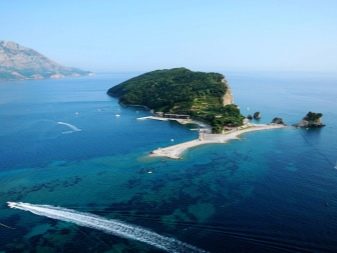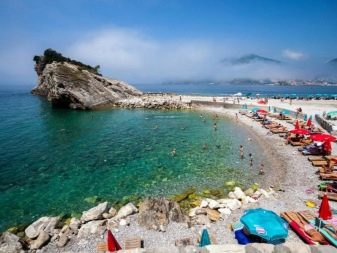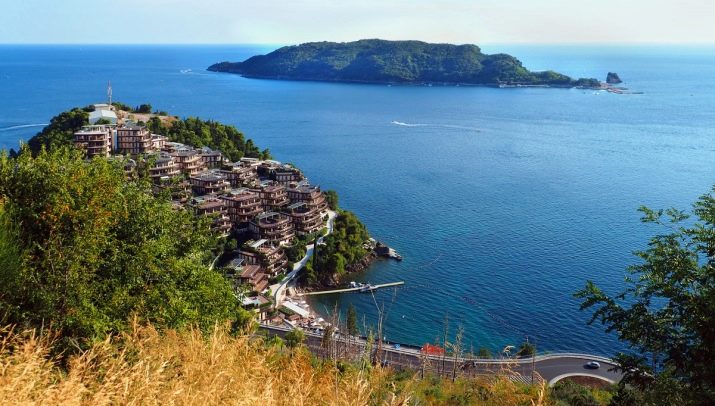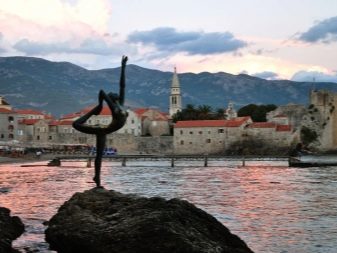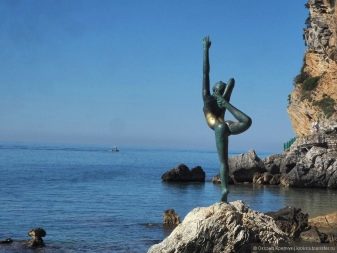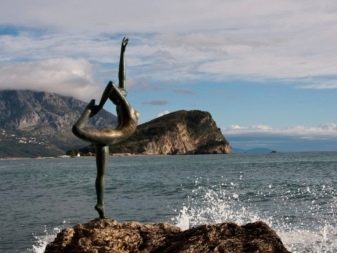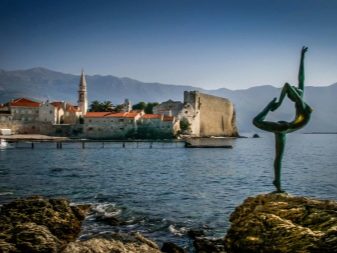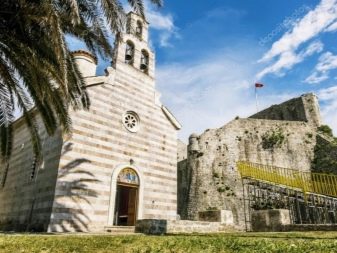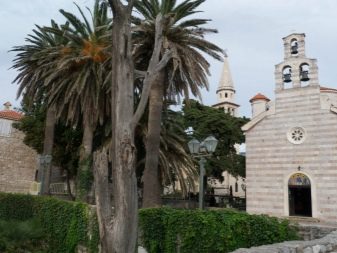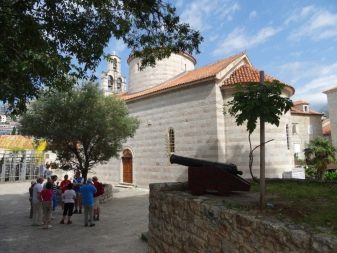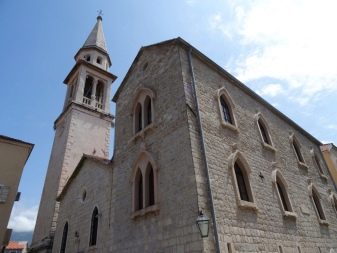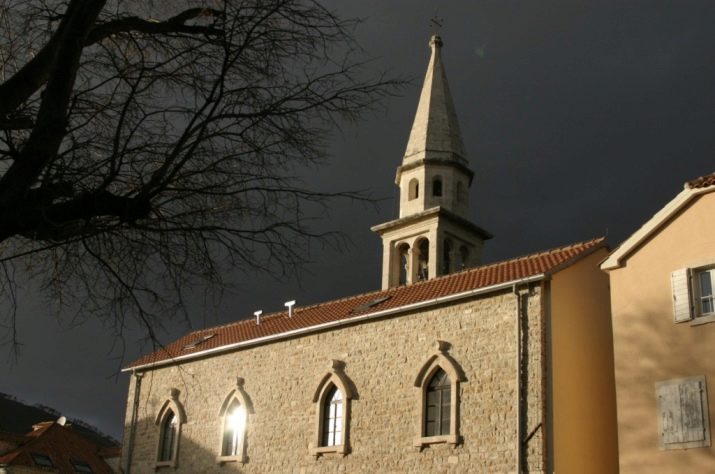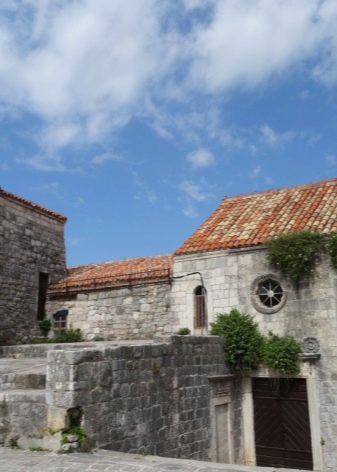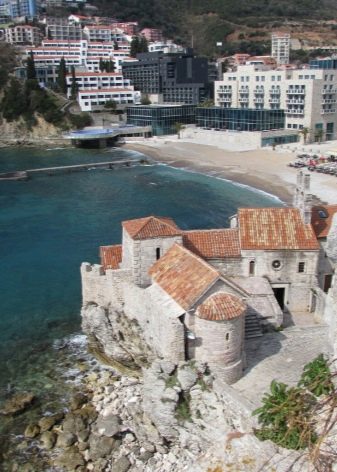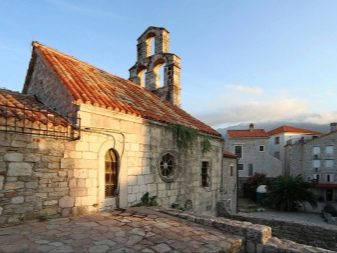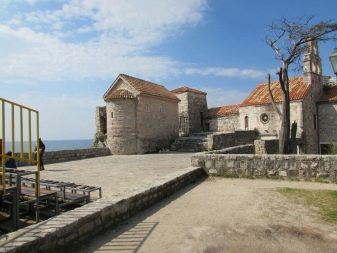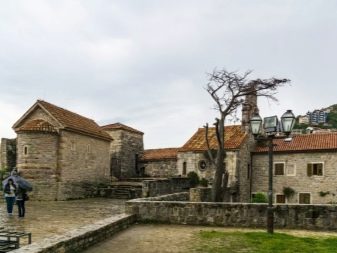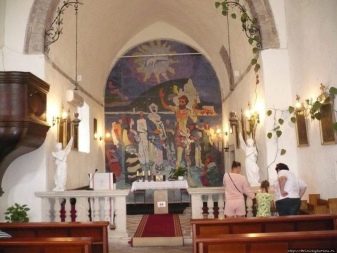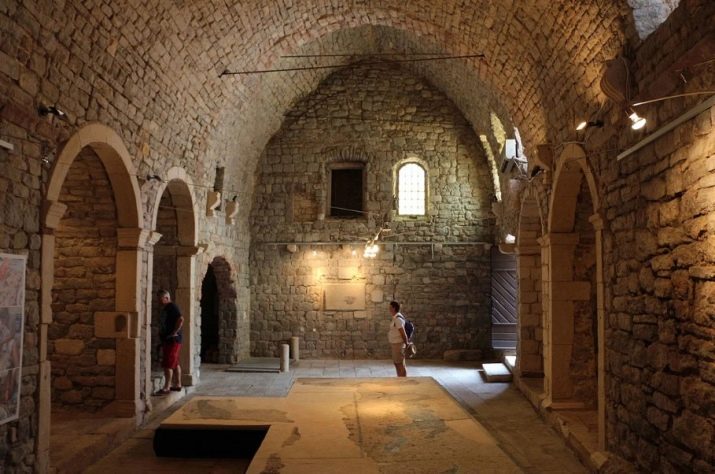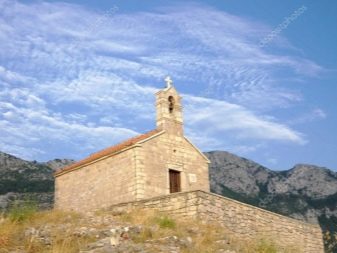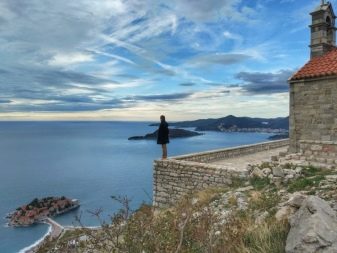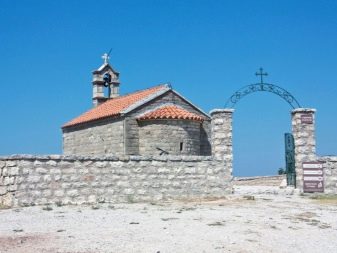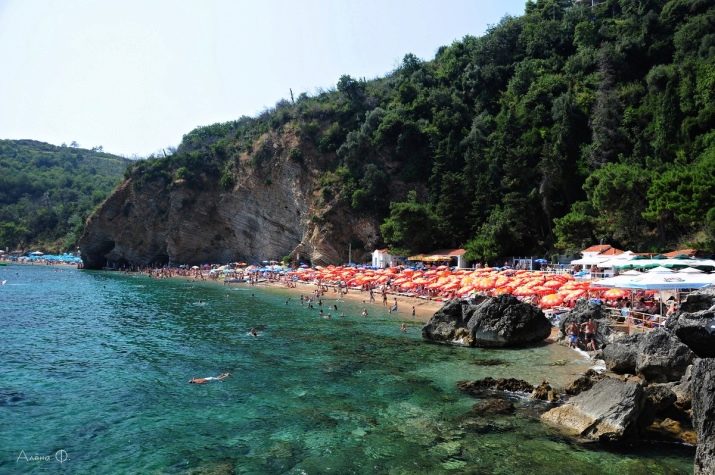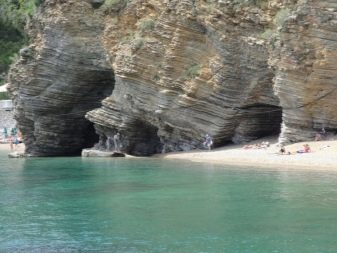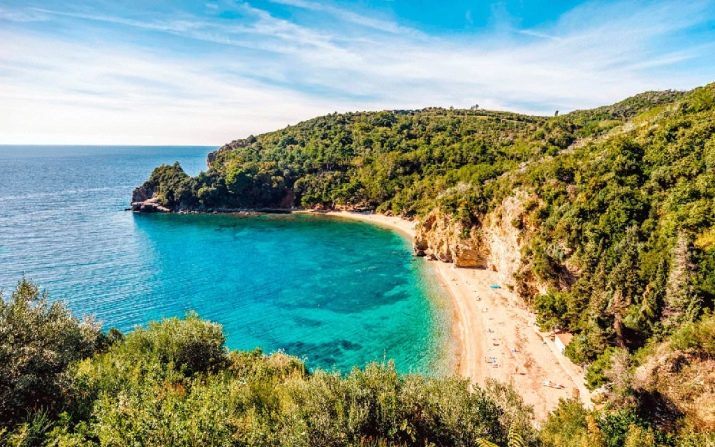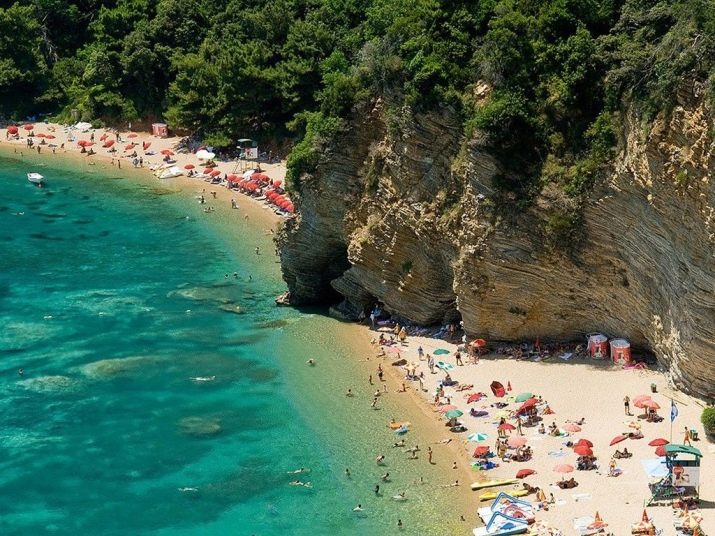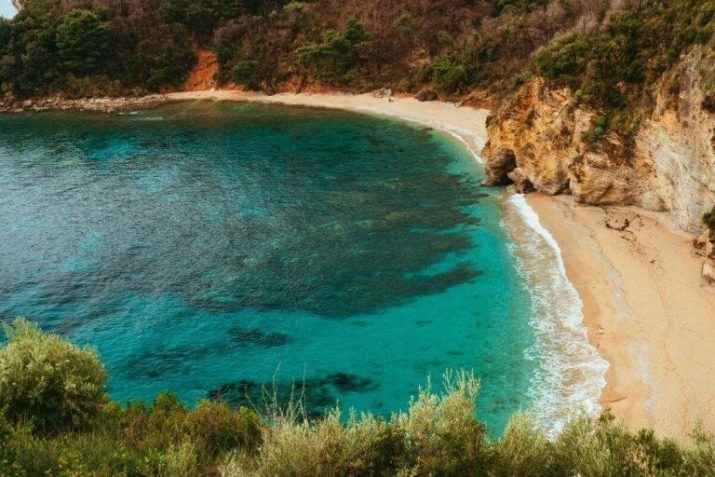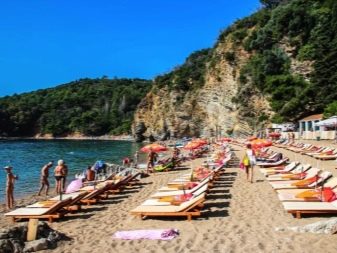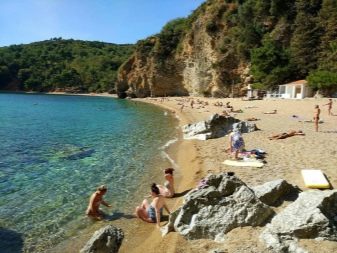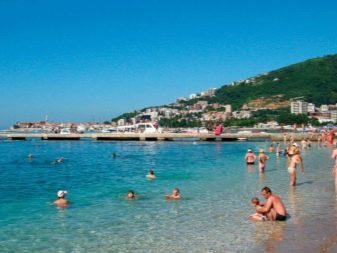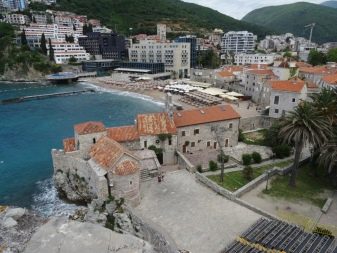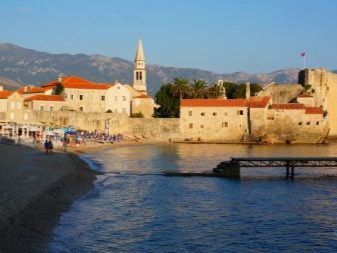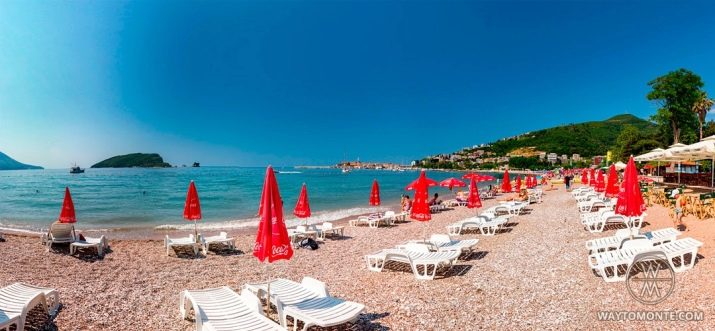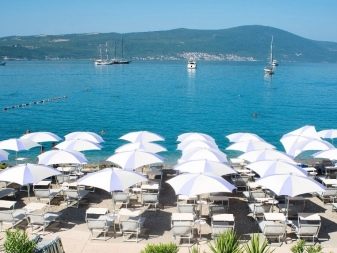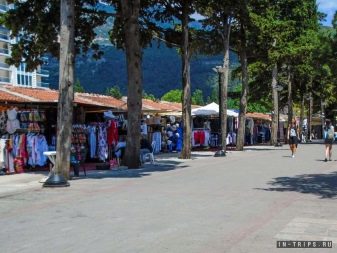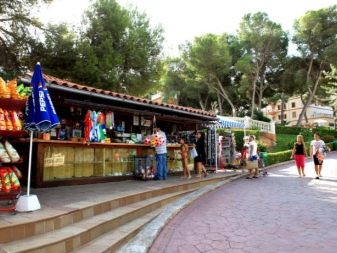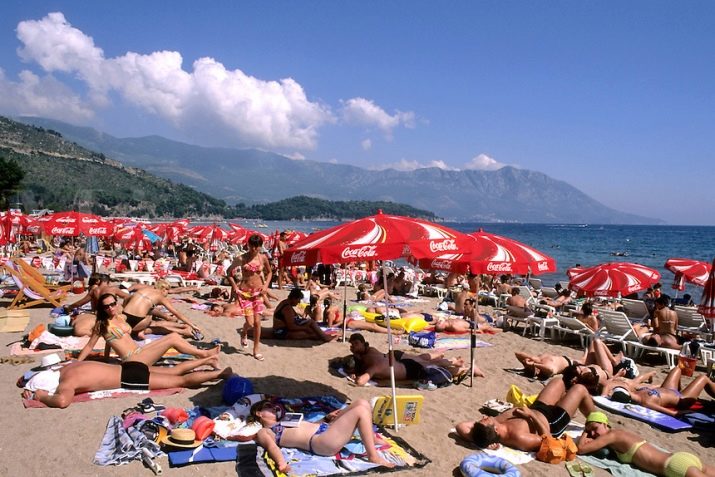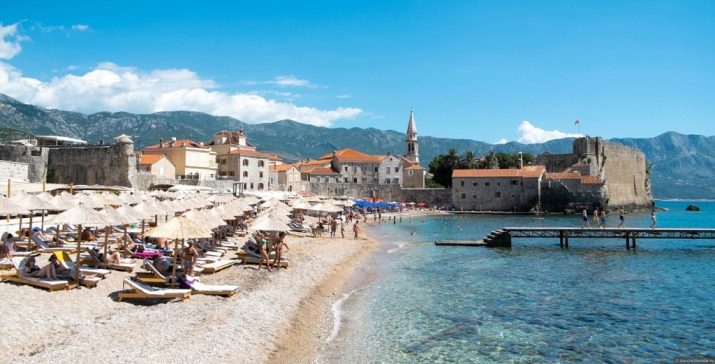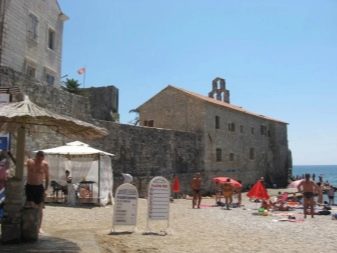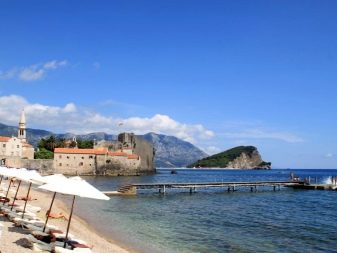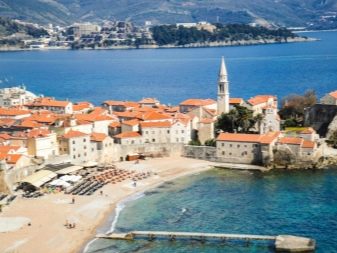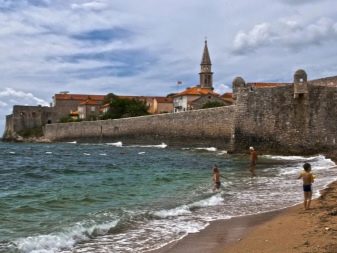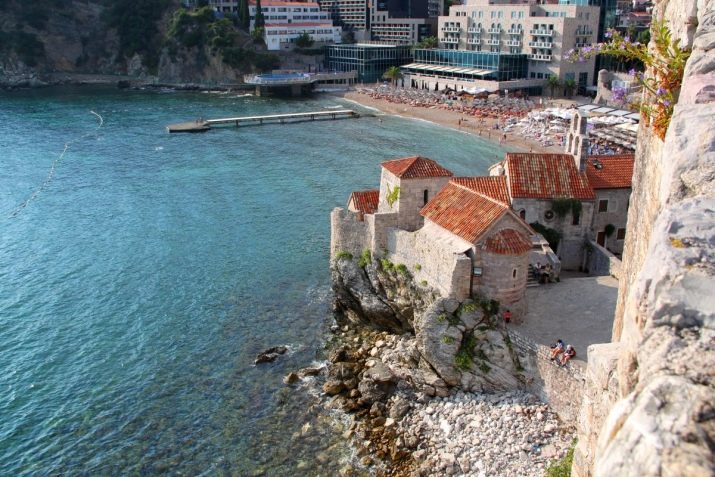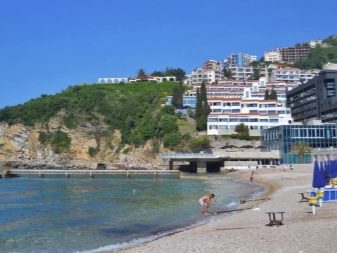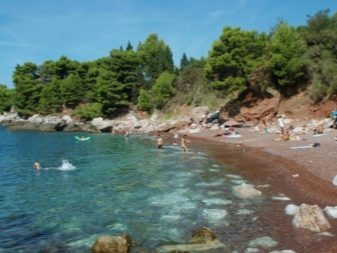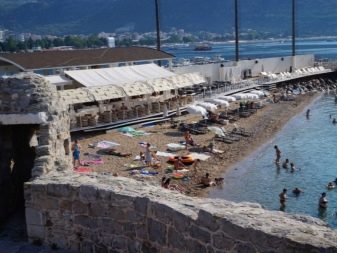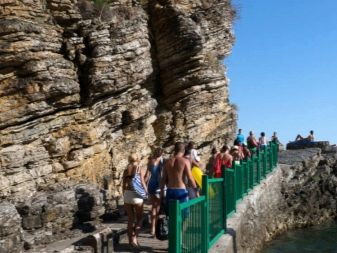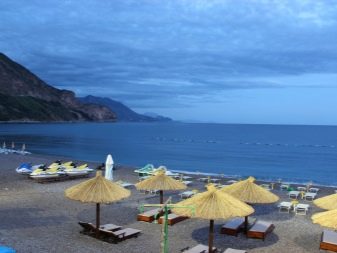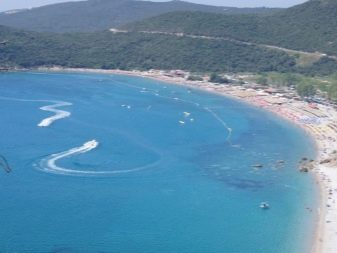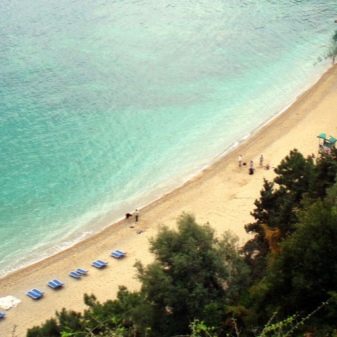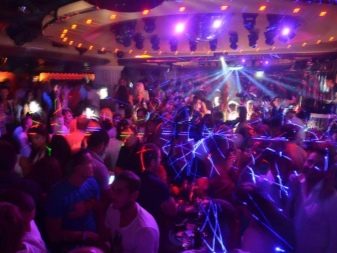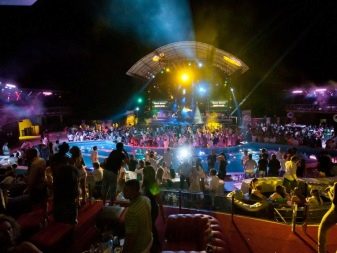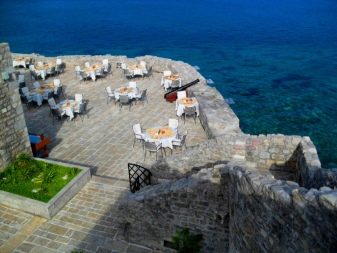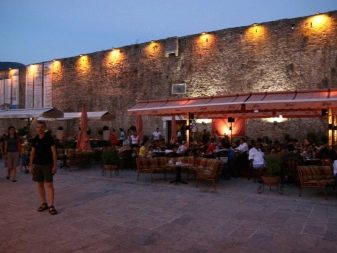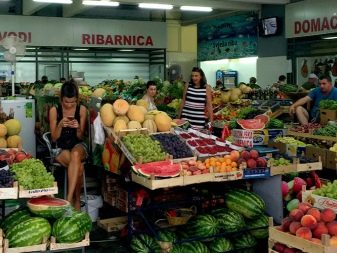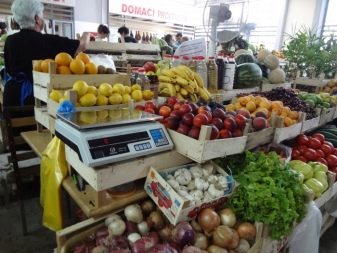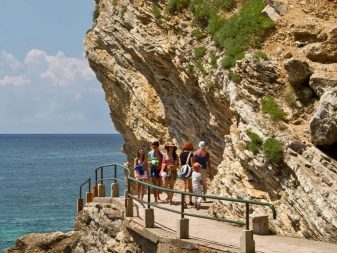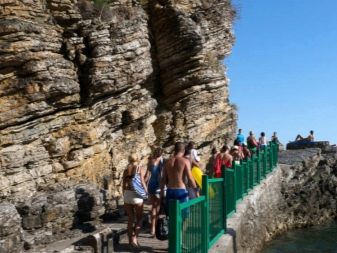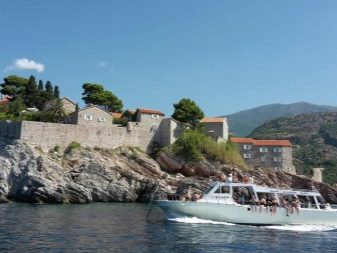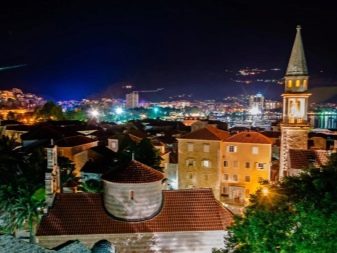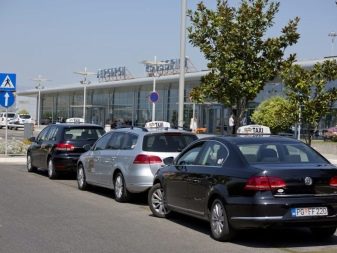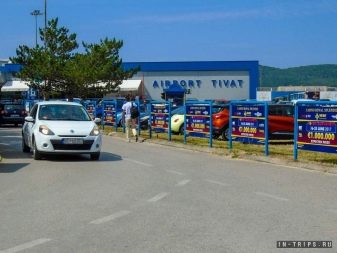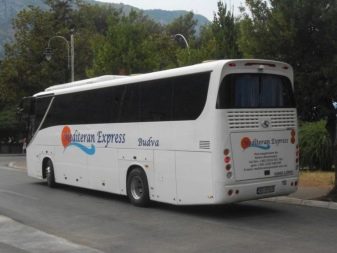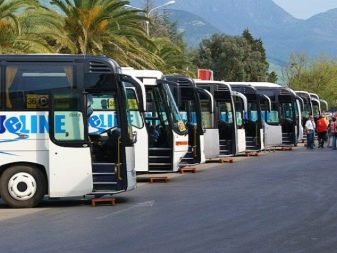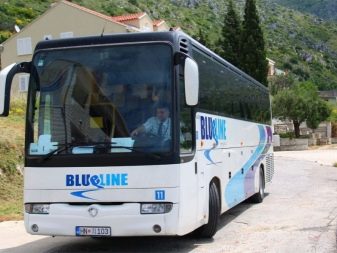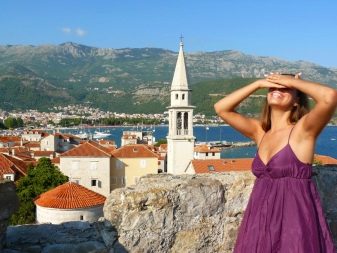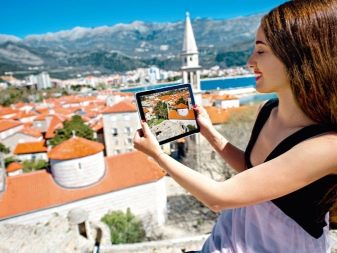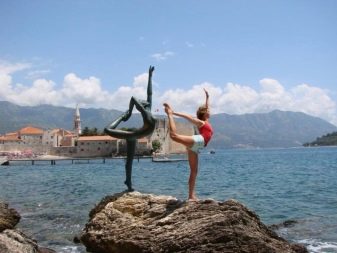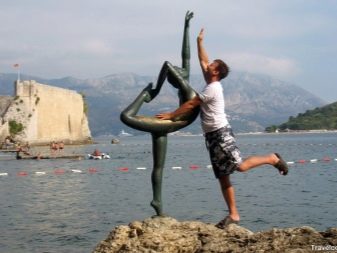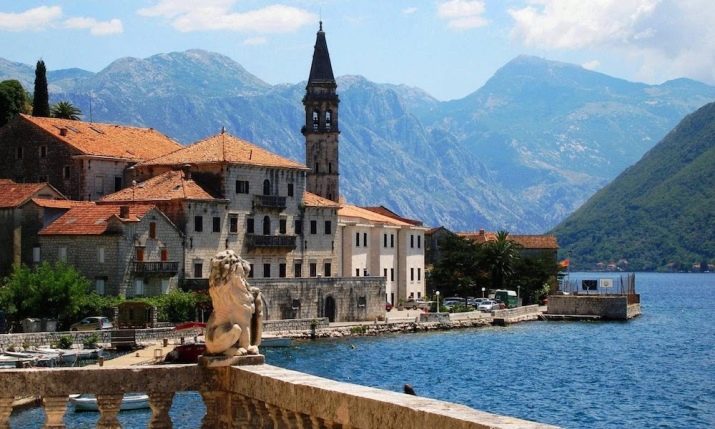Budva is a popular tourist resort, to which thousands of Russians go every year. It is famous for its sunny beaches with crystal clear waters, as well as its rich historical heritage. In this article you will learn about the main features of recreation in Budva.
Description
Budva is a city in Montenegro, located in the central part of the Montenegrin Adriatic. The history of the city dates back to the time of BC - the first records of the ancient Budva appeared 2.5 thousand years ago.
Today the city is the official site of the Budva Riviera, which is considered the largest tourist center in Montenegro. By area, Budva occupies a little less than the area of the regional centers of Belarus and Ukraine - 122 square kilometers. From all sides the city is surrounded by a mountain landscape and cliffs.
The population of Budva, based on the latest census, is about 15 thousand people, with almost a third of this figure being tourists and non-indigenous people. The tourist potential of Budva favorably affected the demographic growth - until the 80s of the twentieth century, only 4.5 thousand people were registered in the entire district.
Weather
Budva belongs to the Mediterranean climate type resorts. Here, mostly hot summer and warm winter are observed - at least 8-9 degrees in January and February. The sun warms the city almost 300 days a year, which makes this place an ideal resort for holidaymakers from all over the world.
The average summer temperature here is about 23-24 degrees Celsius. The average water temperature is ideal for swimming - about 25 degrees, in the autumn and spring, it does not fall below 17 degrees. Even despite the proximity to the water and the high temperature in the region, there is a low level of humidity - up to 80% in the fall and up to 60% in the summer season.
Due to its favorable climate, Budva is considered an excellent resort for health and a beautiful tan.
Where to stay?
Budva is filled with a huge number of hotels and hotels, even for the most perspicacious tourist. In the whole city and beyond it, you can count several hundred establishments that annually receive tourists.
The price of hotel accommodation most often depends on the distance to the coastline and the nearest beaches, as well as the infrastructure of the area. In this way, the most elite hotels and five-star hotels are located on the first coastline no more than 100 meters from the beach.
The best hotels in the city are Moskva, Zeta, Majestic, Kadmo, Hermes Budva. Most of them are equipped with everything necessary for a comfortable stay. The cost of living in them can range from 70 to 90 euros per night.
More budget option will be housing in the city - most of the indigenous people of Budva are settling tourists in their apartments. In a sense, the tourist flow is a gold-bearing residential area for this city.
If you do not have enough money to stay in these hotels or rented apartments, then you can book places in hotels of the 3-star level. The most popular three-star hotels in Budva are Giardino Apartments, Apartments Vidikovac, Vila Simona Lux, Hotel Admiral. Prices for apartments here are more budget - from 30 to 50 euros per night.
sights
The heritage of ancient Budva has dozens of valuable attractions.These are monuments, squares, architectural structures, some of which date more than one hundred years. Some tourists choose holidays in Budva, relying precisely on the cultural wealth of this city - in Montenegro its historical heritage is considered the richest. It is worth considering those sights that most often flash on the pages of guidebooks and in the stories of guides.
Archaeological Museum of Budva
It has more than 3 thousand exhibits, covering the historical period from the V century BC to the XX. Until the second half of the last century there was no museum of its own in the city, the idea of its opening appeared only in 1962. Around the same time, the museum received official registration and began to actively replenish the exhibits, but the opening itself took place only in 2003.
Until 1979, the museum's collection consisted of no more than 2.5 thousand copies, mostly it was antique jewelry, coins and elements of antique ceramic and glassware and weapons. Most of these finds came to the museum's collection from the excavations of 1937 and dated to the V-IV centuries BC.
In April 1979, a destructive 7.0 magnitude earthquake happened off the coast of Montenegro. It affected cities and localities such as Kotor, Bar, Ulcinj and some other coastal areas. One of the affected cities was Budva.
The natural cataclysm had a destructive effect on the integrity of many historical monuments, not to mention the fact that caused the death of dozens of people, but for the future museum he did in some way a most valuable favor.
The earthquake exposed the streets, alleys and the foundation of the old Budva, thus creating fertile ground for more thorough research and excavation. As a result, archaeologists discovered several hundreds of unique finds that helped shed light on the history of the city.
The museum is open from 8.00 to 20.00 every weekday, on weekends - until 17.00. The cost of entry for an adult is 2 euros, for a child - 1. There is the possibility of excursions in groups of 3 or more.
Budva Citadel
Guides know this place as Budva medieval fortress named after St. Mary. It is considered one of the main attractions of the city, often depicted on souvenirs and advertising posters of travel agencies. The citadel is the unofficial center of the entire Old Town.
The history of the Citadel dates back to the 9th century, at that time it represented a full-fledged fortress of fortification type, designed to serve as a defense against the regular raids of the Turkish invaders. Because of the numerous military operations, as well as the destructive power of time, only the northern and eastern walls, including one of the northern towers, have survived to this day. The remaining buildings in the structure of the Citadel were erected already in the XV century by Venetian architects and were designed to strengthen the defensive position of the city.
Many tourists, climbing to observation platforms and the Citadel tower, note a strange feeling - as if time has stopped in this place and the sounds of the relentless battle for these ancient shores are still heard.
Today the Citadel is not just a historical object, but also plays an important role in the cultural development of the city itself. On the territory and in the buildings of the Citadel today there is a functioning museum of maritime affairs, an extensive library dedicated to the history of the Balkans, a small restaurant with an open terrace.
The name of the city is also directly related to the Citadel itself. On one of its walls (in the vicinity of the entrance to the library itself) there is a bas-relief depicting two fish with intertwined bodies. This sculpture is the main legend of Budva. According to legend, she designates two lovers who, in ancient times, threw themselves together into the sea because of the refusal of their parents to bless their marriage.The lovers did not die, but were transformed into two beautiful silver fish that still swim in the generous waters of the Adriatic.
The story soon turned into a legend, and the case was identified with the stable phrase “Ko jedno nek budu dva”, which means “Let two be like one”. It is from this phrase, according to legend, that the name of the city was formed.
St. Nicholas Island
It is one of the most popular places to relax on the beach. The length of the island is small - only 2 km, its area is 47 hectares, it is only one kilometer away from Budva itself, and no money is required for entry. The whole “tail” part of the island is equipped with sun loungers and seating areas, the rocky part is closed for visitors. It is called "Hawaii" in honor of the famous tourist resort.
On the island there are several bars, a paid toilet (free of charge for restaurant visitors), 1 full-fledged restaurant and a small inactive church. Despite the fact that the island’s entrance is free, you will have to get there on a boat, you have to pay for a deck chair and umbrella (from 10 euros), but no one will hurt you to grab your towel and just sunbathe on the rocks. Prices in the bars and restaurants on the island are much higher than in the city, so food and water should be taken as your own.
Also on the island there are several cliffs, from which extreme-loving tourists can jump freely. There is no full track on these rocks, so you have to climb on your own.
Sculpture "Gymnast from Budva"
Another famous Budva sight. The bronze figure, as if floating above the sea waves, is located on the territory of the Mogren beach, which is popular with holidaymakers. It is the unofficial symbol of Budva, symbolizes ease and loyalty, it can often be found on souvenirs, photographic cards and advertising posters.
The legend, which is trying to explain the appearance of the sculpture, tells about the romantic story of a young couple - a young sailor and dancer. They loved each other dearly, but the sailor’s voyages separated them.
Every time he returned to the shore, the girl came to the rock and danced until his ship landed on the shore. One day his ship never returned, but the girl did not stop coming ashore. She waited for him in the rain and in the cold, staying true to her oath, and danced in imitation of the sea wind and waves. She did not wait for him, but kept her love until death.
It was this legend that inspired the sculptor Gradimir Aleksich when he created this amazing statue from bronze. The stretched hand of the dancer is directed upwards, towards the sun and the sea - the only witnesses to the fate of her lover. There is a belief that any desire that you make near this sculpture will someday come true.
Every year, thousands of tourists from all over the world visit the sculpture, take pictures and pose next to the symbol of eternal love and loyalty.
Orthodox Church of the Holy Trinity
One of the few active Orthodox churches in Budva, is located almost in the center of the Old Town opposite the Museum of Archeology at Starogradskaya Square. The church itself was built at the end of the XVIII century and executed in the Byzantine style. It is located in close proximity to the Citadel itself, performing a spiritual and defensive function at the same time. The foundation and walls of the church consist of solid white and red stone.
Even despite the earthquake of 1979, the church is in excellent condition (after a long renovation) and invites tourists and parishioners from all over the city to this day.
Temple of St. John
This Catholic church in the Gothic style was built in the VII century. It was destroyed and restored several times, but today it is presented in its almost original state. In the temple is the famous icon of the Virgin of Budva.It is believed that it was written by St. Luke himself and has miraculous and healing power.
It is noteworthy that this icon is popular not only among Catholic, but also among Orthodox parishioners and travelers. In addition, the church has an extensive library with a large number of valuable historical archives.
The temple is one of the main attractions of the city - the bell tower of this church is easy to notice over all the houses in Budva along an elongated triangular spire.
Church of Saint Mary in Punta
The Middle Ages were famous for the cult of praising the Virgin in the territory of Montenegro, and therefore in Budva itself there are several architectural buildings dedicated to the Virgin Mary.
It is believed that the church was built at the beginning of the 9th century almost simultaneously with the construction of the Citadel itself and is its immediate part. The prefix "punta" actually means the location of the church on the cape or "at the tip." At the beginning of its existence, the temple belonged to the Benedictines, and in the middle of the 15th century it came under the direct order of the Franciscan Order.
It is believed that the place for the construction of the church was chosen exactly the place where in the IX century the monks presented the icon of the Blessed Virgin Mary to the inhabitants of the city. Already at that time there were a large number of believers in the territory of Montenegro, therefore, the interest in this icon increased every day, attracting more and more pilgrims. This was the main reason for the construction of the temple.
Initially, the miraculous icon of the Budva Mother of God, which was already mentioned above, was located in this temple, but in the first half of the XIX century, due to the invasion of French troops on these lands, the icon was moved to the church of St. John.
The internal appearance of this church suffered greatly during the Napoleonic wars, for some time even a real stable was located in the church.
However, the foundation and walls of the temple are preserved, which allowed for a quick reconstruction in the future.
Today, the temple is not used for its intended purpose, however, it often becomes a venue for chamber music concerts and various cultural festivals.
Church of Saint Sava
Also considered one of the oldest Orthodox churches in Budva, named after St. Sava the Sanctified (considered the official founder of the Serbian Orthodox Church). The temple is also part of the City Citadel, but not so noticeable on the background of other attractions. It is located in the immediate vicinity of the Church of St. Mary in Punta, however, unlike other religious buildings, it is not distinguished by the presence of a bell tower, or crosses on the walls and roof.
It is believed that the temple was built a little later than the Church of St. Mary, and serves as a place for the meeting of Catholic and Orthodox masses only 8 centuries (that is, the construction of the XII century).
Like the Church of St. Mary in Punta, this temple is not used for its intended purpose and no longer serves as a gathering place for pilgrims, but you can get inside as a tourist. The interior of the temple is rich in many ancient frescoes and paintings.
It is believed that this place for the construction of the temple was determined by Savva Serbsky himself - from here, according to legends, he began his trip to sacred Jerusalem.
Best beaches
There are 3 beaches on the territory of Budva, they differ in the distance to the city, the number of sun loungers and empty seats, the presence of open bars and restaurants, water temperature and the power of the surf. If you take into account the beaches outside the city limits, then there are as many as 8 beaches near Budva, but up to 5 of them cannot be reached on foot, you will have to order a taxi or transfer.
Mogren
The most popular and most expensive beach in Budva. It is located near the Old Town - about 10-15 minutes walk to it. Pebble beach, the water is very clean, clear and gives a pleasant azure and emerald shades.
The beach has a huge number of sun loungers, which cost 20 euros for one person, the entrance to the beach itself is free. In addition to clear water and a great view of the open sea, there is a small green forest behind the beach - it seems as if you are lying somewhere far away on a desert island among palm trees and untouched nature.
In fact, Mogren is divided into 2 separate beaches, these are Mogren I and Mogren II. Between them there is a convenient passage in the rocks, so that you can change the place of rest at any time.
Food prices at a local bar are much higher than on other beaches, however, the infrastructure here is much nicer. Not far from this beach there is a famous figure of a dancer, which was described above.
If we talk about the differences between the beaches of Mogren I and Mogren II, then the first one is equipped with a large number of sun loungers, there are more cafes and water there is calmer, on the second beach more people relax with towels.
Slavic or Slovenska beach
It is the longest (1.6 km) and cheapest beach on the territory of Budva, with the most popular. It is easiest to find it - it is located directly on the embankment of the city itself. The type of soil is small and sandy.
The water here is very clean, fairly warm and calm, the slope to the water is smooth, as well as the entrance to the sea. The beach is surrounded by green trees and shrubs.
The entrance here is free, the loungers are two times cheaper than in Mogren - 10 euros. Also for convenience, there are toilets, Wi-Fi, shower, cabins for changing clothes, you can order a massage.
On the beach there are all possibilities for active games like volleyball, basketball and football. You can also book a parachute flight, water-skiing, there is equipment for pair diving, not so long ago, bungee jumping or regular bungee jumping was arranged on the beach.
Due to the fact that the beach is located directly in the city, with infrastructure, and especially with food, you will not have any problems. For those who want to cool off or have a snack, there are several restaurants and cafes with hot meals and soft drinks nearby. It is easy to find ice cream, products in restaurants, both traditional and exotic, and seafood.
In addition to places for food, along the beach there is a huge number of souvenir shops with various goods, which in most cases are from China, but you can find shops with designer crafts and textiles.
The disadvantage of this beach is that there even in the non-touristic season there are a lot of tourists. It is very large in itself, therefore there are a lot of deck chairs and places for having a rest with towels. Just lie down in the sun under the peaceful cries of seagulls here will not succeed, it will in any case be the cries of children and drunken vacationers. There is no need to worry about the fact that there will be no places, even on the sunniest day, there are a lot of free sun beds on the beach.
However, be careful - they will remain yours while you or your belongings are guarding them.
Beach in the Old Town of Budva
Located in close proximity to the historic center of the city. The type of soil here is pebbly, it is about 100 meters long. Most tourists and even locals prefer to include this beach in the Slovenian beach, however, this place has its unusual name - Richard chapter, which literally means "leader Richard". The name of the beach is given by the name of American actor Richard Widmark, who in 1963 starred in the film “Viking ships” right on this territory. It is also believed that the beach was named in honor of Richard Burton.
This beach can not be called special - it is rather small, it is not equipped with a large number of restaurants and cafes, but it is located very close to the city. There are a lot less people there than on the rest of the beaches, deck chairs and umbrellas are much more expensive there.
On this beach there are practically no free places for people with ordinary towels, most of it is occupied by tables and comfortable sun beds, which celebrities and rich people of the whole world often enjoy. Still, Richard chapter is included in the list of the most elite beaches in the world.
As on the rest of the beaches of Budva, the water here is exceptionally clear and calm, warm, the coast smoothly flows into the sea, the stones are so pleasant that you can walk barefoot in the water.
Getting to this beach is also very easy. it is located right behind the Old Town, which means you will have to go to the central embankment and just go to the right side until you reach the pebble beach.
While prices on Slovenian and Mogren beaches are more stable, on Richard chapter everything is very dependent on the season. On hot days, prices will be half as high as on other beaches. At the same time, there are almost no restaurants and bars on the beach. For food and drink sometimes you have to go to the Old Town, and everything is much more expensive there than in the official center of the city.
If you don’t find a place for yourself on this beach, then Mogren Beach is just around the corner, there is always enough space for guests. Moreover, the road to Mogren will be very beautiful - among the many rocks, green vegetation and old buildings.
Pisana
Well-equipped beach in the city with a cafe, restaurant and a fairly large number of sun beds. But the water here is the usual bluish color, no cherished blueness and azure. The beach is very small - about 150 meters, most of which is occupied by the nearby cafes and walls of the Citadel, and there are practically no places for towels. In the summer season, guests at the nearest hotels come to this beach, and therefore there are no places for other guests there.
Jaz
Considered one of the most famous beaches in all of Montenegro. The length is 1.2 kilometers. It is customary to divide it into two parts - the first one is 700 meters long for ordinary tourists and holidaymakers, the second part is 400 meters long - for nudists. The beach area is equipped with everything necessary for a comfortable stay, even there are several seasonal hotels, restaurants and shops.
The beach is 6 kilometers from the center of Budva - about 10 minutes by car to the side of Mrčevoi Field.
Guvantse is another small sandy-pebbled beach located on the way to Budva from Becici.
Leisure options
Budva is considered the unofficial cultural capital of the entire Eastern Adriatic. In this, at first glance, a tiny town from the late twentieth century, club parties and discos began to be actively held. Some of these clubs are seasonal, while others operate year-round even under the open sky.
The city has a well-developed food chain, throughout the city there are a huge number of restaurants with cuisines all over the world - from Chinese to European, there are several fast food outlets.
There are also several food markets, but prices there are much higher than in regular stores, since they are designed specifically for tourists. If you are thinking of shopping, it is better to go to local supermarkets, there is always a lot of fresh and tasty products at reasonable prices.
If you are bored with beaches and restaurants, you can go with children to the city water park (not so long ago it was built outside the city). It is considered the largest in the entire Adriatic (the total area is almost 42 thousand square meters). In the water park there are a lot of various water entertainments for adults and for the smallest - there are 53 constantly open rides and slides on the territory. In addition, inside the park is a restaurant and several children's cafes.
At the moment, the water park operates seasonally - from the beginning of summer until September 30.
In addition to the above entertainment, the city constantly holds tourist camps for excursions to important places in Budva and Montenegro.
Most of the leisure facilities are located in close proximity to the coast and beaches, but after dark it is possible to stroll through the Old Town and feel the atmosphere of ancient Montenegro. There you will meet many street musicians, merchants of sweets and handicrafts.
How to get there?
The nearest airport to Budva is in the city of Tivat (20 kilometers). To get from Tivat to Budva, you can choose a taxi. Usually taxi drivers waiting for passengers at the bus station. The average price of a trip from Tivat to Budva will be from 12 to 20 euros. If you move in the company, then this option will be more convenient.
If you come alone or together, you should make an order for transfer in advance. If you have any problems or you did not order anything, you just have to wait for the nearest bus to Budva. On summer days they drive there constantly and very often. The fare will cost about 3-5 euros and take about 20 minutes. There are no stops near the airport, you just need to stand on the highway near the road to the airport and vote on passing buses with the inscription “Budva”. Before the trip, be sure to check again whether the bus is going where you need to go.
If the driver does not understand you - you can specify the desired direction or place on the map.
As a rule, the bus can make a circle to other localities for the selection of other customers, so take a taxi much faster.
Reviews
Every year, hundreds of tourists visit the resorts of Budva, mostly vacationers from the CIS countries and Eastern Europe. Most of them note the crystal clearness of the Adriatic Sea, the beautiful nature with rocky terrain and lush vegetation, as well as the wonderful infrastructure of the beaches and the city itself.
Special attention should be paid to the reviews of tourists regarding the historical heritage of Budva. Many say that this ancient city with its stone streets and low houses is shrouded in ancient secrets and riddles, and the rest itself is remembered as some kind of adventure.
The financial side of the issue is also clearly monitored in the feedback from resort visitors - many notice that for a resort located in southern Europe, there are extremely low prices and a good level of service.
Overview of the city and features of the rest, see below.
